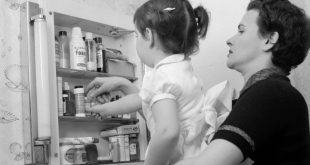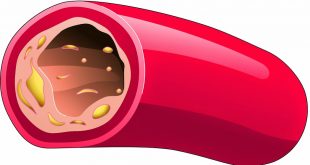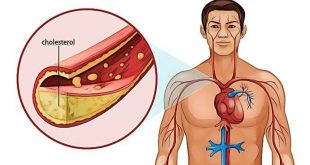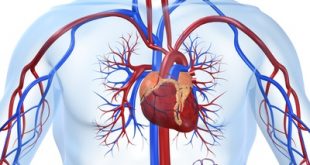Introduction
Blood pressure tends to increase with age. Therefore, hypertension is exceedingly common in the elderly.
Blood pressure control is less likely to be achieved in elderly with hypertension. Some of the reasons include:
- Resistant hypertension
- Adherence to medications (elderly generally has to take more pills compare to the young as they tend to have more medical conditions)
- Different blood pressure goals for elderly patients used by different physicians.
Hypertension is associated with significant burden of health and an increased risk of heart disease, stroke, decreased quality of life and death in elderly.
Despite the common phenomenon of hypertension in elderly, we generally do not know much of what is the ideal treatment goal for elderly as many researches in the past has not included older population.
Physiological Blood Vessel Changes With Aging
Blood vessel walls tend to become stiffer with aging. The effects are:
- Increasing systolic blood pressure
- Decreasing diastolic blood pressure
The effect of this arterial aging (eg. arteriosclerosis) causes a condition known as isolated systolic hypertension, which accounts for 87% of hypertension cases in elderly. Isolated systolic hypertension happens when systolic BP is greater or equal to 140mmHg with diastolic BP less than 90mmHg.

‘J’ Or ‘U’ Shapes Relationship Between Blood Pressure Level And Outcome
We generally know that high blood pressure leads to bad outcome including heart disease, stroke, kidney disease and death
Aggressively lowering the blood pressure, however, may also cause a situation where blood supply to the vital organs gets interrupted. Therefore, lowering blood pressure too much may result in bad outcome as well.
U shape relationship between blood pressure level and outcomes means bad outcomes can occurs when blood pressure level is at both extreme: either too high or too low.
Therefore, it is important to determine the best target of blood pressure control for each individual base on the evidence we have from research.


Targets Recommended For Elderly

The targets suggested above are for fit elderly. Sometimes, the target may not be reached due to severe orthostatic hypotension. In that case, the lowest tolerated blood pressure should be chosen as the target.
The blood pressure targets may have to be adjusted and individualize to higher level for frail elderly
Other targets for reducing cardiovascular risk should also be addressed. They include ideal body weight, blood sugar and lipid level (Hyperlink to diabetes and hyperlipidemia management)
Recommendation For Treatment Of Hypertension In Elderly
Treatment in elderly patients in challenging as a result of:
- Risk of orthostatic hypotension (low blood pressure on changing of posture)
- Medications interactions
- Side effects of medications (more prone in elderly)
- The presence of other medical conditions
- Difficulty in adhering to treatment (including memory loss, depression or cost of medications)
Over aggressive blood pressure reduce blood supply to the brain. This may worsened the already impaired blood pressure regulation ability in elderly.
Lifestyle and diet modifications should be recommended to all patients with hypertension.
Home blood pressure monitoring is important in diagnosis of hypertension in elderly due to the presence of possibility of white-coat hypertension (hyperlink to white-coat hypertension).
Blood pressure reduction is more important that the use of any particular medications. Thiazide diuretics, CCBs, or ACE inhibitors/ARBs are all reasonable first option as medical therapy (hyperlink to treatment of hypertension in elderly)
General rule is to start any medication at the lowest dose, and gradually increase to reach blood pressure targets. The usual saying: “start low, go slow and reach targets’
Clinic follow ups with regular blood check is essential for elderly taking blood pressure medication. Treatment of hypertension should not be self administered without guidance and surveillance from the professionals.
Conclusion
- Hypertension in elderly is common and treatment is needed.
- Diagnosis and treatment is more challenging in elderly compare to the young.
- Lifestyle and diet modification should be advocated in all hypertensive elderly. If medication is needed, it should be started at the lowest dose and dose adjusted gradually.
- For elderly below age of 80 years old, systolic blood pressure target should be below 140mmHg. For elderly equal or older than 80 years old, systolic blood pressure target should be 140-150mmHg.
- For frail elderly or elderly suffering from orthostatic hypotension, a higher blood pressure target may be selected. The blood pressure target for this fragile group of elderly should be customized.
References
- Kaplan NM. Systemic hypertension: therapy. In: Libby P, Bonow RO, Mann DL, Zipes DP. Braunwald’s Heart Disease: A Textbook of Cardiovascular Medicine. 8th ed. Philadelphia, Pa: Saunders Elsevier; 2007:chap 41.
- Victor RG, Kaplan NM. Systemic hypertension: mechanisms and diagnosis. In: Libby P, Bonow RO, Mann DL, Zipes DP. Braunwald’s Heart Disease: A Textbook of Cardiovascular Medicine. 8th ed. Philadelphia, Pa: Saunders Elsevier; 2007:chap 40.
- Beckett NS, Peters R, Fletcher AE, et al; HYVET Study Group. Treatment of hypertension in patients 80 years of age or older. N Engl J Med. 2008;358(18):1887–1898.
| Last Reviewed | : | 2 March 2016 |
| Writer | : | Dr. Cheah Wee Kooi |
| Accreditor | : | Dr. Ainol Shareha Binti Sahar |
 PENDIDIKAN PESAKIT Kementerian Kesihatan Malaysia
PENDIDIKAN PESAKIT Kementerian Kesihatan Malaysia



